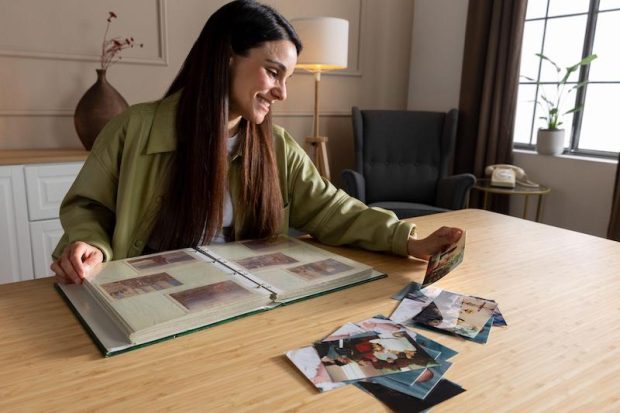When you think of your family, what comes to mind? Do you see a row of smiling faces in front of the Christmas tree or an old photo of your great-grandmother with her hair piled high on top of her head?
Perhaps it’s a picture of your parents, siblings, children—or maybe even yourself. Whatever the image, it’s likely that one thing is true: there are plenty of pictures in your family’s memory. And while they may be precious reminders of loved ones’ past, they’re also a potential source of joy and comfort in the present.
Either way, here are some simple do’s and don’ts for displaying (and preserving) old family photos.

Do keep your photos in a photo book
Photos are fragile, and they can easily be damaged if not cared for properly. Photo books are the best way to store your photos because they are made of thick, acid-free paper and have reinforced binding so that you can open and close them without worrying about tearing the pages or damaging the photos. This will protect the photos from damage caused by acid, water damage, and UV rays.
You can also use this opportunity to organize your photos into themes or events using dividers and labels, which helps you remember what’s going on in each photo. It also preserves the original color of the photos, so they won’t fade over time. Using a photo book is one of the best ways to keep your family photos safe.
Don’t let acid degrade your photos
Acid can be found in certain kinds of paper, such as newspaper printings or glossy magazine pages. This also includes things like vinegar or lemon juice, which can cause discoloration on their own, as well as soda pop or other sugary drinks that contain phosphoric acid.
If you have any of these kinds of papers and things lying around your house, make sure you’re not displaying them near any old family photos. Acidic paper can eat away at the surface of your photo over time, causing it to become blurry or discolored—or even disappear entirely!
Do use “safe” adhesives
If you intend to display your family photos on a wall or tabletop, make sure that you use an adhesive that won’t damage them over time. For example, if you’re mounting them on foam board, choose an adhesive made specifically for photographs instead of one designed for foam board mounting generally (which can be saturated with acidic chemicals).
But if you’re an amateur, you probably don’t want to risk your photos falling off the wall by choosing a less-than-ideal glue. The best bet is to use photo corners or some other form of “safe” adhesive that won’t damage the face of your photo.
Don’t use tape on the back of photos
Tape is acidic and will make your photos yellow if you use it for preservation purposes. Instead, use a museum-quality acid-free adhesive to preserve your favorite family photos without changing their color or causing them to fade.
It’s important to remember that no matter how careful you are when applying tape to the backside of your photos, it won’t last as long as other types of adhesives. And if it does fall off, there will be a sticky residue left behind that can ruin the look and feel of your photos forever. So, we recommend that you stop doing it!
Do try to get old photos scanned onto a computer
If you want to keep your family’s history stored forever in digital form, then scanning those old photos onto a computer is the way to go! There are many ways that you can scan old photographs onto your computer and then print them out again later if needed so that they’re preserved indefinitely without any damage done by time.
You can even take digital pictures with today’s smartphones and tablets! It’s easy enough for anyone to do—this way, you’ll be able to enjoy them from anywhere and even share them with friends and family across town or across the world!
Don’t display photos in direct sunlight
Sunlight can fade photographs over time, so try to keep them out of direct sunlight as much as possible. UV rays from the sun can weaken the colors of your photos and cause them to look washed out, so keep them out of direct sunlight and away from windows that let in natural light.
You can display them in a place that gets plenty of light but not direct sunlight. If you need to store them away somewhere, ensure the container is dark enough for the photo to not fade any further.
Do choose UV-Protective glass for family photos
If you can’t avoid displaying photos in direct sunlight, try using UV-protective glass over them instead of just regular glass. This will protect the photograph from fading over time and prevent any damage from occurring when it’s exposed to light for extended periods of time.
You can find this type of glass at most hardware stores or online. Just be sure to check the packaging for a label that reads “UV protective”. Remember: this glass must be cleaned before using it on your photos because dust particles can scratch off some of the protective coatings and make things worse!
Wrapping Up
As you can see, the simple do’s and don’ts of displaying and preserving old family photos is not so simple. But that’s okay! You don’t have to be an expert in following these tips—just pay attention to what you are doing, get creative with your display, and remember: if it looks good enough for your family members, it’s probably good enough for everyone else!
Read More:

